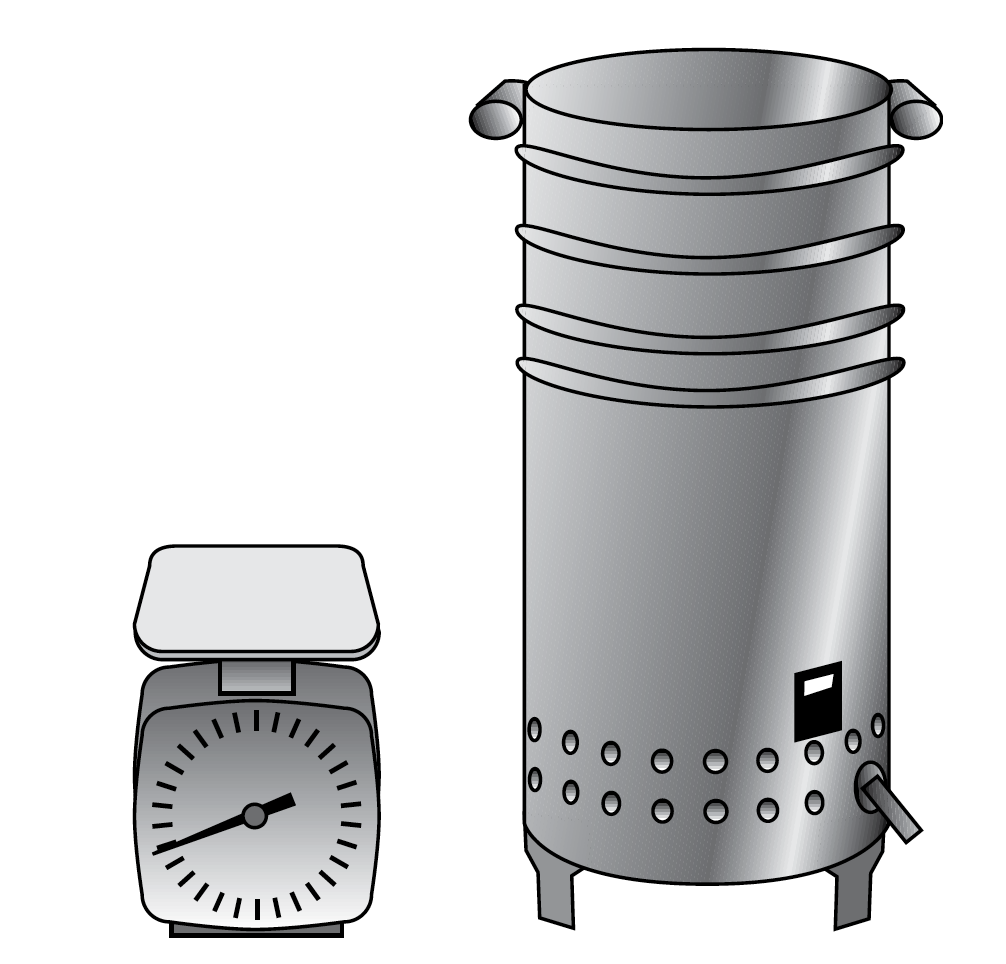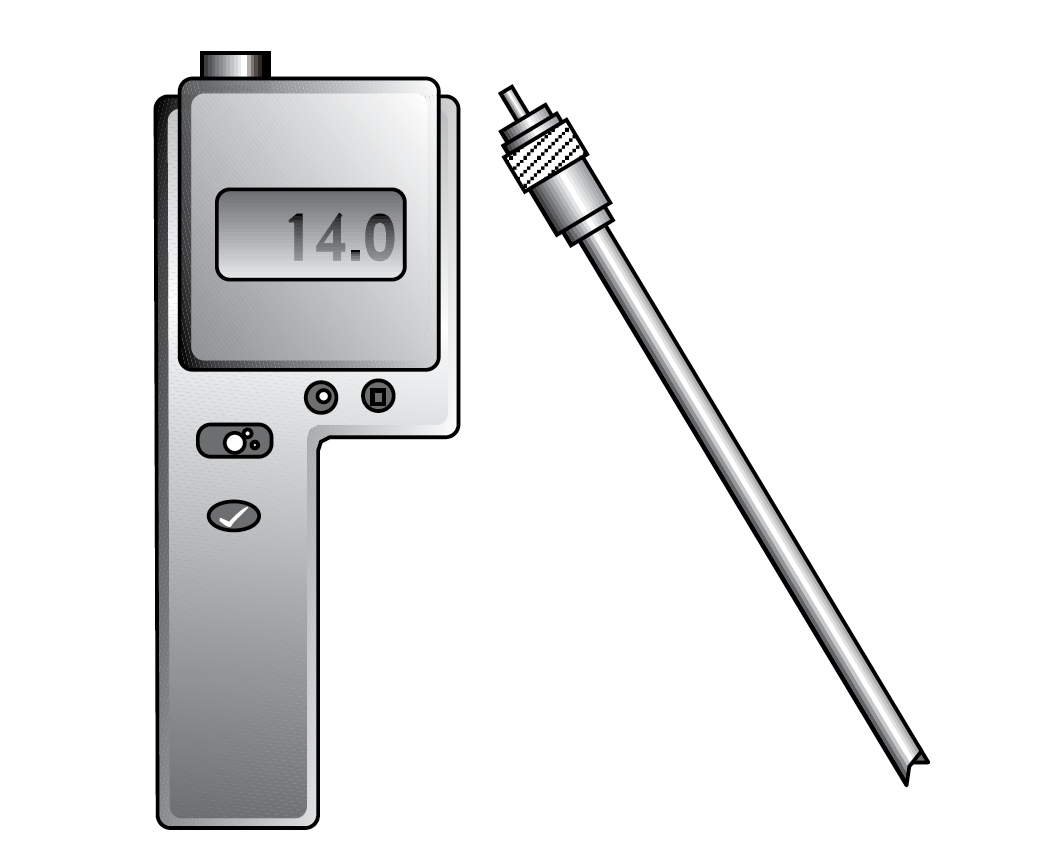Determining Forage Moisture Concentration
ID
442-106(BSE-330P)
Harvesting and storing forage at the proper moisture concentration is essential to producing a high-quality product. Ideally, hay should have a moisture concentration between 15 percent and 18 percent during baling. Forage baled at higher moisture levels is subject to heat damage, dry-matter loss, mold spoilage, and hay fires if not wrapped. Protein and total digestible nutrient losses are increased for hay baled at low (<15%) moisture levels. Baling at the proper moisture level is critical to making quality hay, especially for larger bales (round and square), since moisture and heat dissipate more slowly in comparison to smaller bales.
Forage to be made into silage should have a moisture concentration between 40 percent and 60 percent prior to ensiling. Recommended ranges of moisture levels for various silage types are 70 percent to 85 percent for direct-cut silage, 60 percent to 70 percent for wilted silage, and 40 percent to 60 percent for low-moisture silage (haylage). Ensiling forage at higher moisture levels increases the risk of butyric acid formation (foul odor), which will reduce intake by livestock. In addition, ensiling high-moisture forage can increase dry matter loss, nutrient loss from seepage, and silo damage from silage effluent. Silage may undergo incomplete fermentation or be subject to heat damage and protein breakdown when forage is ensiled too low moisture
Accurately measuring forage moisture concentration requires that the forage be oven-dried under controlled conditions. This is a time consuming process that is usually performed in the laboratory. However, good estimates of forage moisture concentration can be made quickly and easily on the farm using the methods discussed in this publication.
Determining Forage Moisture
Forage moisture concentration can be quickly estimated using one of three methods: the hand method, measurement with a moisture tester, and drying forage in a microwave.
Hand Method
The hand method, also known as the grab test or squeeze test, is a crude method to estimate forage moisture concentration. It also takes a lot of experience to perfect the technique needed to use this method. To approximate the moisture concentration of hay, take a handful of forage, twist it tightly, and release. Hay should not be baled if the forage is brittle and falls apart (too dry) or stays wadded up or slowly untwists (too wet). Hay that springs open and fluffs out upon release is at the right moisture concentration and is ready to be baled. If hay is too dry, wait until the humidity increases in the evening before baling.
The hand method is also used to estimate the moisture concentration of forage to be ensiled. Take a handful of chopped forage, squeeze it into a ball, and release. Chopped forage is too wet to ensile if the ball stays together and too dry if it quickly falls apart. Forage that slowly falls apart is ready to be ensiled. Table 1 contains more detailed guidelines for estimating forage moisture concentration using the hand method.
| Characteristic of forage | squeezed in hand Moisture (%) |
|---|---|
| Water is easily squeezed out and material holds shape | > 80 |
| Water can just be squeezed out and material holds shape | 75 – 80 |
| Little or no water can be squeezed out but material holds shape | 70 –75 |
| No water can be squeezed out and material falls apart slowly | 60 –70 |
| No water can be squeezed out and material falls apart rapidly | < 60 |
Two types of forage moisture testers are available: one uses heat and the other measures electrical conductivity. Heat-type moisture testers consist of a heater/fan drying unit, a screen-bottomed sample container, and a simple spring scale (Figure 1). You can determine moisture concentration by filling the sample container with a fixed amount of wet forage and drying the forage to a constant dry matter percentage. The tester uses the weight difference between the wet forage and dry forage to determine the initial forage moisture concentration. Most heat-type moisture testers require 25 to 35 minutes per test.

Electronic conductance moisture testers provide an instantaneous moisture concentration reading. Most electronic conductance testers have a sensing probe and a hand-held display unit (Figure 2). The electrical resistance of the forage is measured between two metal contacts at the tip of the probe when inserted into the forage. Testers determine forage moisture concentration based on the relationship between moisture concentration and electrical conductivity.

Some electronic conductance moisture testers require several moisture readings from throughout a bale or windrow before averaging the values. Other testers require one or two moisture readings from a representative forage sample. Another type of electronic conductance moisture tester can be mounted to a baler to provide continuous moisture-concentration readings during baling. Note that both electronic conductance and heat-type moisture testers work best for baled hay and are not very accurate for determining moisture concentration of forage in a windrow.
Heat-type moisture testers tend to be more accurate than electronic conductance moisture testers, although results can be affected by many factors, including the effects of hay-drying agents. Either type of moisture tester can be purchased from agricultural supply houses.
Microwave Oven Method
The microwave oven method provides reasonably accurate forage moisture results in a relatively short time. Although this method takes about 20 minutes to complete, the measured moisture concentration is much more accurate than those from electronic conductance moisture testers.
3 Before using the microwave oven method, obtain the following items:
- Microwave oven
- Scale (must weigh in grams)
- Microwave-safe plate
- 10- to 12-ounce cup of water (a coffee mug works best)
- Pencil and paper
Use the following procedure for the best results:
- Obtain a representative forage sample (whole plant material).
- Cut the sample into 1-inch pieces; keep leaves and stems uniformly mixed.
- Place a paper towel on the plate.
- Weigh the plate and record it as “plate weight.”
- Add approximately 100 grams of the forage sample to the plate; spread the sample as uniformly as possible.
- Weigh the plate with the forage sample and record it as “initial weight.”
- Place the cup of water in the corner of the oven to capture unabsorbed microwaves as the plant tissue dries.
- Place the sample on the plate in the center of the oven.
- Set the oven on HIGH for 3 minutes* and “cook” the sample.
- Remove the sample and plate, weigh them, and record the weight.
- Change the water in the cup to prevent the water from boiling over.
- Set the oven on HIGH for 2 minutes* and “recook” the sample.
- Remove the sample and plate, weigh them, and record the weight.
- Repeat steps 7 through 10 until the weight does not change more than 1 gram (this means the sample is dry); record as “final weight.”
- Use the following equation to determine the percent of moisture of the forage sample:

*Make sure to heat samples in short intervals to prevent the forage from igniting.
Summary
Baling or ensiling forage at the proper moisture concentration can reduce both harvest and storage losses to provide a high-quality feed. Forage moisture concentration can be quickly estimated on the farm using one of three methods: the hand method, moisture testers, or the microwave-oven method. The hand method is fast, but is only a crude approximation of forage moisture concentration. Two types of moisture testers are available to determine forage moisture concentration. Heat-type testers provide good estimations of moisture concentration, but require 25 to 35 minutes of operation. Electronic moisture testers provide an instantaneous moisture concentration reading; however, the readings are often less accurate than those from heat-type moisture testers. The microwave-oven method requires approximately 30 minutes and provides relatively accurate results. No matter which method you choose, use a good representative sample of the forage for the best results.
Acknowledgments
The author acknowledges the coauthors for their contribution of the previous versions: Susan Gay and Ray Smith.
Disclaimer
Commercial products are named in this publication for informational purposes only. Virginia Cooperative Extension does not endorse these products and does not intend discrimination against other products which also may be suitable.
Virginia Cooperative Extension materials are available for public use, reprint, or citation without further permission, provided the use includes credit to the author and to Virginia Cooperative Extension, Virginia Tech, and Virginia State University.
Virginia Cooperative Extension is a partnership of Virginia Tech, Virginia State University, the U.S. Department of Agriculture, and local governments. Its programs and employment are open to all, regardless of age, color, disability, sex (including pregnancy), gender, gender identity, gender expression, national origin, political affiliation, race, religion, sexual orientation, genetic information, military status, or any other basis protected by law
Publication Date
July 2, 2020



